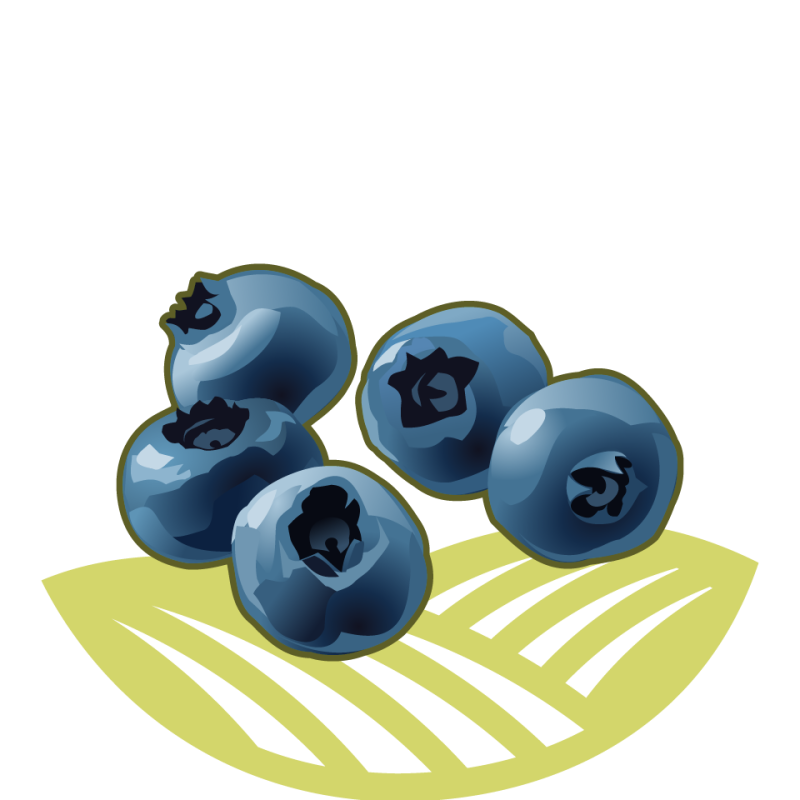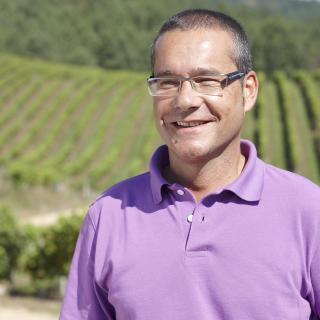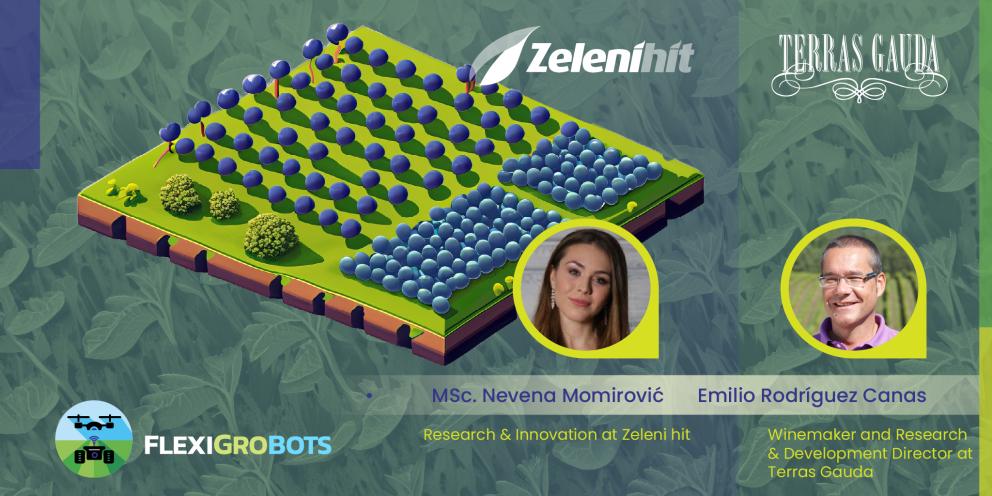We interviewed the Džodan family (🔵) and Terras Gauda (🍇), future end-users of the FlexiGroBots platform.
Džodan family are owners of the first digital blueberry farm in Serbia where all blueberry use-case experiments are carried out within the FlexiGroBots project, in order to track the possibilities/range of use of AI in blueberry production.
Bodegas Terras Gauda, SA was founded in 1990 to produce white wines with native varieties under DO Rías Baixas, one of the five DD.OO.s of Galicia, Spain. Within FlexiGroBots, Terras is involved in use-case experiments related to vineyards with a special focus on verifying the effectiveness of ground robots and drones with demonstrations on specific plots for the development of the pilot.

What are the main requirements for blueberry/grape as a European high-value crop? What is considered the critical point of this agricultural production?
🔵: In general, we need to achieve premium quality fruits for export to the most demanding markets (Poland, UK, Sweden, etc.) with the highest profit gain. For this purpose, we have to obtain continuity and the best standards for our products. The main challenge would be the issue of cash flow, as we have to provide money liquidity for the whole next year’s production in only 4-5 weeks’ time. Rising labour costs and even more so, lack of labour, is one of the biggest challenges when growing blueberries.
🍇: The great competition worldwide in the wine sector forces winegrowers to seek the highest quality grapes to make the best wines, with production costs that do not skyrocket. Otherwise, and due to high competition, even if we manage to produce quality products, it is difficult to compete with other markets where costs are lower. Therefore, the critical point in the production of quality grapes is the difficulty in finding specialized labour and trying to optimise production costs.
As end-users, what general advantages do you think the results of the FlexiGroBots project can bring to future blueberry/grape production? Do you think that a new robotic platform would provide important solutions for you as producers?
🔵: We believe that modern equipment, sensors, drones and all outcomes of this project would allow for the automation of processes and synchronization of agricultural operations. What we expect to gain from this robotic platform is a universal solution for high productivity and profitability of production, but more importantly, great quality and health-food safety. Also, it is very important that we achieve very few oscillations in terms of yield, quality standards and uniformity of size and firmness of the fruits, sugar content and pesticide residues.
🍇: A serious difficulty in managing the vineyard is making decisions at key moments and quickly so, and these often depend on field observation by technicians, being a process that requires time and enormous human resources. We believe that thanks to their versatility, robotic platforms will provide us with relevant data to drive AI-guided agricultural operations, as well as precision in these operations in the vineyard to perform the necessary tasks, reducing environmental footprint and costs.

Please explain some of the major challenges and obstacles in blueberry/grape production, which should be overcome with the help of the robotic platform?
🔵: Those would definitely be: weed control, as well as pest & disease monitoring. Diseases in blueberry production specifically are very often secondary problems as a consequence of inadequate agro-technic measures or poor production conditions (Botryospheria, Phytophtora cinamomi etc.). The support decision system for improving and optimization of blueberry production will allow for avoiding these issues, while vegetation index maps would serve for monitoring crop conditions, health status, prediction and forecast of flowers and yield. Last, but not least, knowing that we would be able to perform soil analysis in the field and quickly receive results seems like a very good solution for optimizing the time of crop fertilization.
🍇: By means of a collaborative robot, we will be able to improve the working conditions of the operators, harvest time will be reduced and grapes will reach the winery earlier, which will result in better quality. Diseases that affect the vineyard, such as Botrytis, cause high losses in the sector each harvest due to the lack of an early detection system for infections and a mechanism to carry out treatments with precision, with localized applications of pesticides. If, thanks to drones and ground robots, a disease detection system is achieved at an early stage, as well as rapid, accurate, and reliable treatment application, we will obtain an appreciable qualitative improvement of the grapes, a higher yield and a reduction in the use of inputs.
Do you have any other comments which would be important for partners engaged in the FlexiGroBots project, regarding some future requirements offered by the robotic platform for the berry fruits/wine sector?
🔵: From our point of view, it would be ideal if this platform could also be used in the future for similar berry fruits, such as raspberry or blackberry, as these cultures do have similar growing conditions and needs. We ourselves are planning to broaden our production, offer and cash flow periods by planting new raspberry varieties and extending our production period while decreasing the costs. Many other berry producers tend to go in the same direction, so this option should be taken into account for future project development.
🍇: Although we know that flexible platforms are being designed in this project, it would be very interesting to broaden the range of vineyard diseases that robotic platforms could detect. In this way, with the same platform and depending on the phenological state of the vineyard, the detection would be oriented towards the disease at the precise moment of the growing season where there is a risk of infection.


